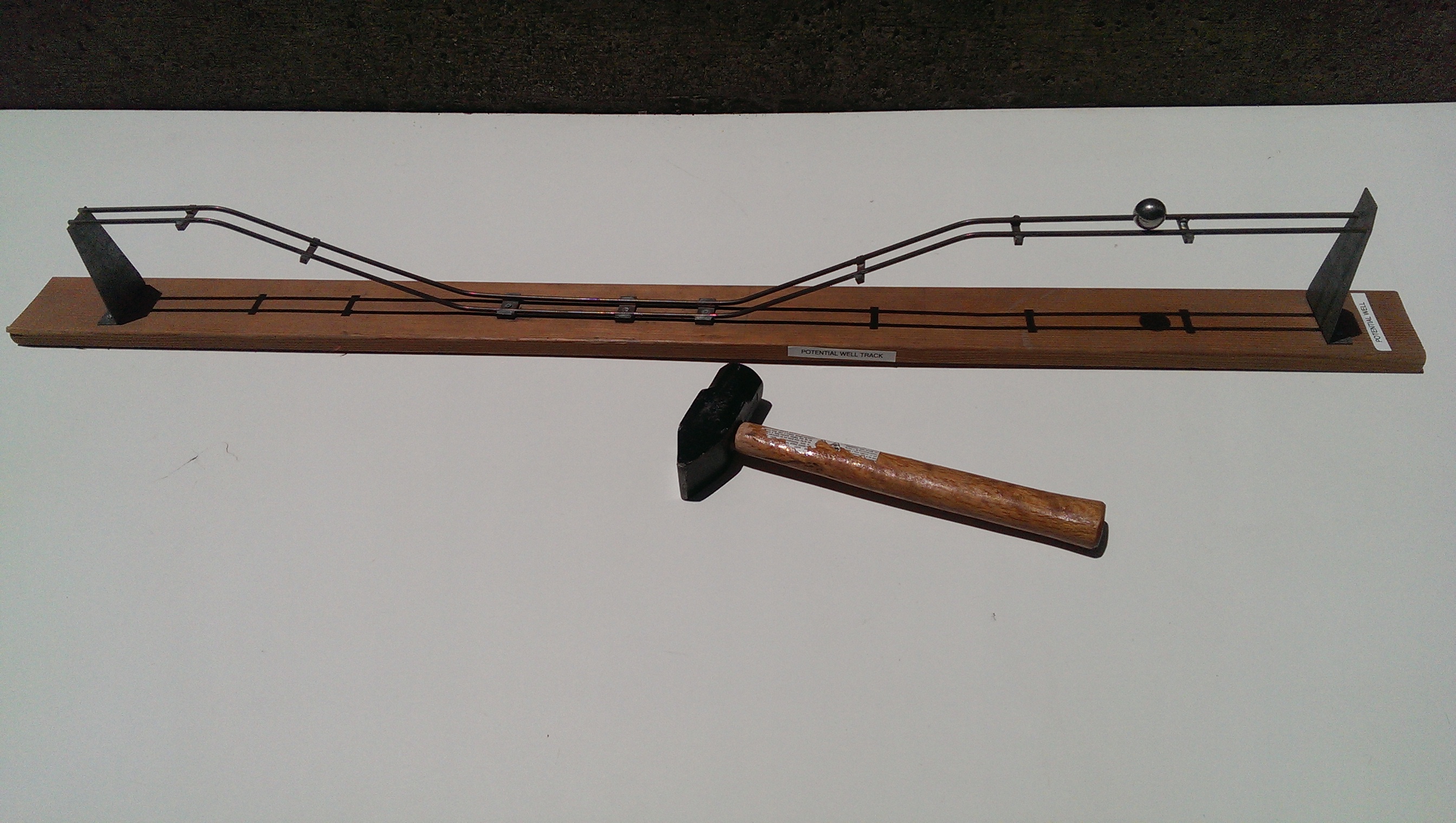This track demonstrates a two-level potential energy system. The upper and lower levels represent states of higher and lower potential energy, respectively. When the steel ball is at the lower level and is given additional energy (from a hammer strike), it is able to escape the potential well.
This demonstration can be used to explain photoeffect, one-dimensional model of electron trap, ionization process, etc.
Equipment:
- Potential well track
- Metal ball
- Hammer(optional)
Demo:
Place the metal ball on the upper level of the track. The track is tilted, so the ball will begin to roll by itself, and we do not need to add any outside energy into the system(see the explanation section). Observe as the ball becomes stuck oscillating in the lower level, or well.
Optional: As the ball oscillates in the well, we can use an outside force to push the ball into a higher potential energy state, or the upper level. Using a hammer, tap the ball lightly as it reaches a maximum height in the well, and the ball will escape the well and move to the upper level.
Explanation:
When the ball is still in the upper level, it has some potential energy, U, and zero kinetic energy, K. We can see this by looking at the equations for potential and kinetic energy:
Where g is the acceleration due to gravity, m is the mass of the ball, h is the height of the ball, and v is the speed of the ball. Total energy is conserved inside the system and is the sum of the kinetic energy and potential energy:
While the potential and kinetic energies might change, total energy must stay constant within the system. This means that as the potential energy increases, the kinetic energy must decrease, and vice versa.
If the ball is initially at rest, v is zero and the kinetic energy is consequently zero. The ball also has some height, h, meaning that it has a corresponding potential energy due to gravity.
When the ball starts rolling along the slightly tilted upper level, it gains kinetic energy as it loses potential energy, falling into the well. At the bottom of the well, the ball will have maximum kinetic energy and a potential energy of zero. Once it starts to rise again, the kinetic energy decreases as the potential energy increases. At the very top of the well, the ball does not have quite enough energy to make it to the upper level, and falls back down again. In a frictionless system, the ball would be able to make it back up to its original height, and continue oscillating back and forth forever. In this case, however, the ball loses energy due to friction until it eventually comes to a stop.
By hitting the ball with a hammer, we give the ball enough kinetic energy to escape the potential well.
Note:
Practice is recommended prior to demonstrating in front of an audience for the hammer and ball demo.
Written by Lydia Seymour
